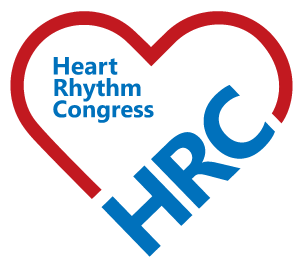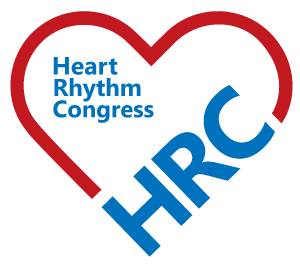Palliative care (PC) is recommended as a standard of practice for all patients with heart failure (HF) and is supported by evidence of improved patient outcomes (e.g. reduction in symptoms refractory to cardiovascular therapies and improved shared decision-making).1 PC also addresses the persistent disparity in care experienced by patients from disenfranchised groups.2 PC is often a consultative service, but the shortage of PC clinicians makes this impossible for most HF centres. Additionally, evidence supporting PC interventions in HF is on-going; therefore, clinicians are encouraged to adapt PC to the needs of the patient and care partner.1 These realities reflect the challenge bestowed upon cardiology clinicians to integrate a PC approach with the management of heart failure with reduced ejection fraction (HFrEF). In a basic sense, this approach can include addressing and treating distressing symptoms such as dyspnoea and depression, with on-going conversations to assess and incorporate patient values and goals into treatment decisions. Furthermore, the multidisciplinary nature of cardiology medicine, which includes, for example, physicians, nurses, social workers and pharmacists, is ideal for addressing the holistic approach needed.
This article aims to empower cardiology clinicians to provide PC using a two-pronged approach, which includes optimized HFrEF management and patient-centric communication. We will present an overview of recommendations at critical junctures along the HF trajectory.
Diagnosis
Diagnosis and staging are concurrently challenging for cardiology clinicians and overwhelming for patients.3 Patients with HF often present to clinics with little understanding of their condition and what to expect, which creates confusion, delays in treatment and poor medication adherence.
Symptoms
The management of symptoms at the time of diagnosis is driven by the stage of illness. PC can include dyspnoea management, fluid balance monitoring, consideration of medication burden/cost and a discussion of mental health symptoms. Dyspnoea is a common and distressing symptom that clinicians can empower their patients to manage. It is beneficial for clinicians to review the proper usage of loop diuretics and other self-management strategies, including educating the patient about the early signs of fluid overload and the benefit of daily weight monitoring. Frequent communication at the first sign of fluid overload can reduce hospitalizations and improve quality of life. Depression is a common comorbidity predictive of higher mortality that necessitates empathetic and routine screenings and pharmacotherapy to be considered.4
Communication
A common barrier to discussing diagnosis and prognosis is fear of causing distress; however, patients typically want to talk to their doctor about what is important to them. Values-based conversations include discussions about goals and preferences that can guide medical decision-making. Therefore, it is crucial that these conversations are high-quality and focus on what matters most to patients and care partners.5 The Serious Illness Care Program is a multicomponent intervention that provides training, tools and preparation materials for increasing clinicians’ comfort and confidence in facilitating conversations.6–8 The Serious Illness Conversation Guide provides prompts and questions to guide the content and flow of the conversation. Additionally, it provides the language for delivering uncertain prognoses, which is helpful given the unpredictable nature of HF. Guide questions include, “Can you tell me your understanding of what’s happening with your health now?” and “what are your biggest worries?”.7
Routine Visits
Routine symptom management in patients with HFrEF is a class 1 recommendation according to the 2022 American Heart Association guideline.1 In addition to allowing clinicians to hold informal conversations with patients about symptoms burden, quality of life scores such as the Kansas City Cardiomyopathy Questionnaire can be longitudinally assessed to help account for exacerbations and periods of symptom stability.
HF places a considerable burden on support systems due to the frequent visits, hospitalizations and possible considerations about advanced therapy.9,10 Addressing care partner support is a fundamental tenet of PC and one that can be integrated with the help of team members, such as nurses and social workers. Integrating PC within HF management prioritizes the relief of both patient and care partner suffering, acknowledging that caring for someone with a serious chronic illness is difficult. Throughout the patients’ disease course, it is essential to validate the care partners’ experiences, such as anticipatory grief and bereavement after death. Clinicians can inquire with care partners about how they are coping, their anticipatory grief symptoms and their degree of self-care to encourage their own health management.
Communication
On-going conversations about the hopes, fears, worries and goals of patients and care partners are needed as priorities change over time. New baseline functioning (e.g. activities of daily living, hobbies) and prognosis all influence the perception of values, including tolerance for treatment risks and burden.11 Implementing the Serious Illness Conversation Guide and having continuing discussions at each visit ensures that medical therapies align with patient preferences. Involving social workers, nurses and chaplains in assessing and addressing psychosocial and spiritual needs can facilitate this comprehensive approach. One strategy to integrate care is to implement co-visits within clinic settings or arrange a follow-up with a social worker/nurse after the patient interacts with the physician.
Hospitalization
During and after a hospitalization, patients’ quality of life may worsen without recovery to previous functioning, requiring adjustment to a ‘new normal’. Post-hospitalization is an opportunity to re-screen patients for symptoms and reestablish care goals.
Communication
Unexpected hospitalizations can precipitate patients and care partners into crisis during hospitalizations. They raise decisions about whether patients can return home or need higher-intensity care. Additionally, as the exacerbation may represent decompensation, discussions may be needed around initiating, continuing or possibly discontinuing therapies (e.g. intravenous inotropic support, implantable cardioverter defibrillator).
These discussions may be early or late in terms of the timing of the decisions that need to be made, which impacts the quality of life or survival of the patient.12 In cases of rapid decompensation, whether to pursue advanced therapies is an imminent decision. Ideally, values elicitation held during diagnosis or routine visits will guide discussions. Clinicians who are new to the patient can ask whether they have anticipated these medical decisions. Discussions may be difficult if these conversations have not happened previously and there is a limited understanding of HF and prognosis. It is essential to understand the patient’s and their care partners’ emotional and cognitive processing, health literacy, trust in the healthcare team and system, understanding of illness, and hopes and concerns.6 These aspects of care are especially important for patients from historically marginalized groups.13 For additional support, clinicians can receive training from programmes such as VitalTalk, which offers evidence-based training.12
End of Life
Symptoms
At the end of life, symptom management may include refractory dyspnoea, depression, and a need to transition to hospice care.14 While end-of-life and refractory symptoms trigger the involvement of PC specialists, cardiology clinicians can manage HF symptomatology for these patients. Opioids are often used for refractory dyspnoea, despite optimal diuretic use; however, this practice has not been addressed in current guidelines, as evidence to support dose titration has been inconclusive.11,15,16 Feelings of breathlessness can increase anxiety and distress, especially at the end of life; thus, a comprehensive assessment of the risks and benefits for each patient is needed. Cardiac cachexia is common, as are abdominal oedema, bloating and attention to regular bowel movements, and care partners should be counselled on this aspect of disease progression. Clinicians are advised to discuss the deactivation of implantable cardioverter defibrillators with patients and care partners. Continuous inotropic dependency can be used to relieve palliate symptoms but will require consideration and conversations about costs, other burdens, timing and the process of discontinuing the therapy.17
Communication
Communication about death is impacted by whether it was expected. An unexpected death may occur due to a dramatic change in clinical presentation for someone with a known illness (e.g. in the intensive care unit for an infection that precipitates HF decompensation), who has sustained a second myocardial infarction and is now in shock/critically ill, or who is considering advanced therapies but is no longer eligible (e.g. new terminal cancer diagnosis). The emotional aspects of disbelief can be anticipated even when the patient has been chronically ill.
When death is expected, there is the added value of having time to initiate goals-of-care discussions. Early hospice referrals are encouraged; however, clinicians may feel uneasy or unsure about bringing up hospice. The Ask-Tell-Ask strategy can help to deliver recommendations.12 This strategy is effective as clinicians are encouraged to start with open-ended questions (e.g. perception, expectations, an invitation to talk more) before providing the pieces of information. Then, clinicians are to follow up on the information by asking more questions to clarify the concerns or needs of patients and care partners. The Ask-Tell-Ask approach can help clinicians to provide a diagnosis, prognosis or recommendation. When discussing hospice, clinicians are encouraged to explore the patients’ past experiences with hospice, which can provide helpful insight. Discussions surrounding hospice can elicit emotional responses from patients and care partners; giving empathetic responses and remaining silent before providing logistical information (e.g. cost, services provided, etc.) can promote dialogue.12
Conclusion
As practice models evolve, the population of patients with HF grows, and the palliative specialist shortage persists, cardiology clinicians will be expected to provide PC interventions alongside guideline-directed medical therapy. More resources and research focusing on effective communication skills and symptom training, as well as team-based PC approaches in cardiovascular medicine, are needed. Demystifying what PC involves will make integration easier and improve the quality of care and quality of life for patients with HF.












